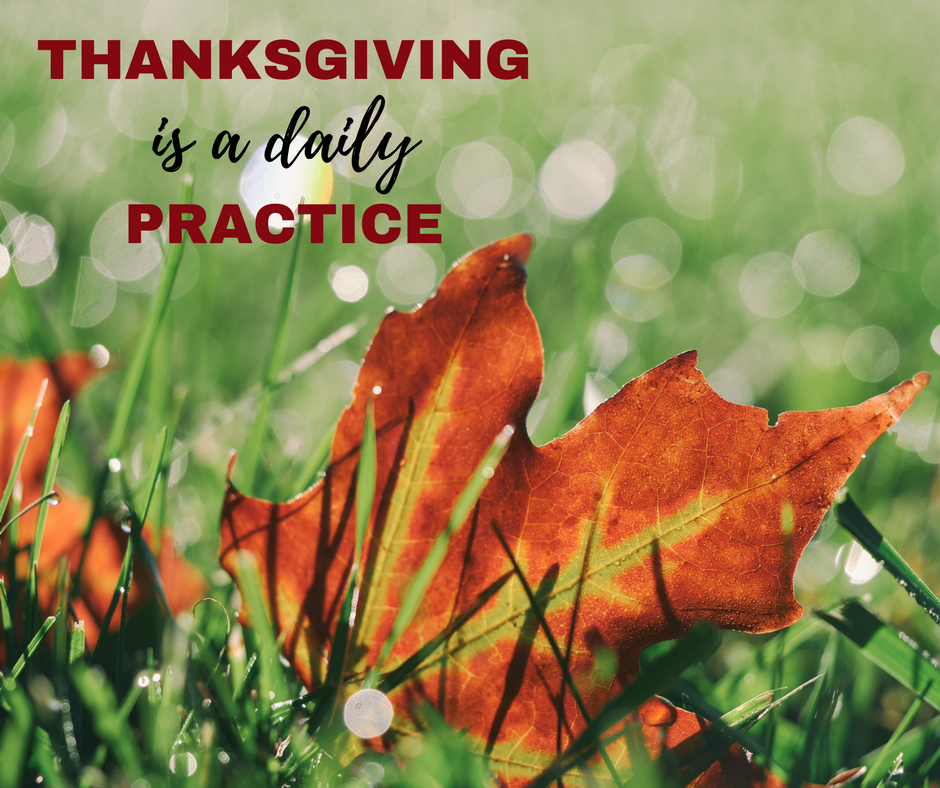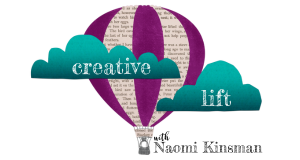by Naomi | Jan 17, 2017 | Creative Life
Creativity often shows up at the intersection of various thoughts. Here are three on the importance of rhythm … what do they spark for you?

“To live is to be musical, starting with the blood dancing in your veins. Everything living has a rhythm. Do you feel your music?”
― Michael Jackson
“Comedy isn’t necessarily all dialogue. Think of Buster Keaton: the poker face and all this chaos going on all around him. Sometimes it’s a question of timing, of the proper rhythm.”
― Clint Eastwood
“If you have pendulum clocks on the wall and start them all at different times, after a while the pendulums will all swing in synchronicity. The same thing happens with heart cells in a Petri dish: They start beating in rhythm even when they’re not touching one another.”
― Bruce Lipton
by Naomi | Jan 3, 2017 | Creative Life

I hope you took some time off over the holidays. While you were off, I hope you took time to play. And if you’re now back, I hope you’ll continue to carve out space for joy-filled moments.
The thing is, even when we’re on vacation, play doesn’t simply happen.
In order to play, we must say YES. You’d think this would be an easy thing to do, but … well, we all know how quickly “no” springs to our lips.
Dave, Turley and I had a wonderful break. We all love the snow, and spent a good part of a couple days stomping around in snow-shoes. Turley has snow-boots and socks, which mysteriously are the only thing that will keep the shoes on his paws … no one knows why. Still, we’re grateful we found a solution to the painful ice-balls that develop on his paws otherwise.
Even while snowshoeing, it was tempting to take myself way too seriously.
Snowshoeing is supposed to be a workout, right? But on the third day out, we decided to stop for a minute and create a snowman. The snow wasn’t at all right for snowman-making, but we didn’t let that stop us. The challenge made it all the more fun. Plus, we got creative about our snowman … my favorite part were the antennae.
You may have read that I’m launching a new mastermind this year called The Journey Project.
I truly hope you’ll join us. Why? Because I know that if we’re intentional, we can have a joy-filled year AND we can accomplish meaningful work. What if 2017 was the year that you never answered the question, “How are you?” with “I’m so busy!” What if instead, stories of memorable moments bubbled out of you? It’s all about the frame you put on your year.
[pexcirclecta pex_attr_small_title=”Want to know more?” pex_attr_button_text=”What’s the Journey Project?” pex_attr_button_link=”https://www.naomikinsman.com/journey-project” pex_attr_button_link_open=”new”][/pexcirclecta]
by Naomi | Dec 22, 2016 | Creative Life

When I was a little girl, I made most of my Christmas gifts for others. My mom had a sheep collection–ornaments, knick-knacks, and everything in between. One year, I decided to add a new sheep to her collection. What could be easier? A little paper mache, some paint, and wha-la! I busied myself with glue and paper and created the cutest little sheep. I waited for him to dry, excited to add the final details. But then, I noticed an odd smell. Every day, the smell grew worse, until the stink filled my closet. It took a while for the penny to drop, but finally I remembered that when we’d made paper mache in school, we’d used a balloon and a thin layer of paper and glue. Inside my sheep was a wad of paper soaked in paper mache … the smell was my sheep rotting from the inside out.
More than any of the other presents I’d made, I’d been looking forward to giving the sheep to my mom. Now, what should I do? Should I toss out the stinky sheep? If I did, what would I replace him with?
In the end, I wrapped him up and put him under the tree. Yes, I did. I was hoping for a Christmas miracle, I suppose. I hoped his insides would finally dry and the stink would magically disappear. No such luck. We still laugh about the look on my mom’s face when she pulled that rotting sheep out of the tissue paper.
But the snort-hiccuping full body laughter that followed the unwrapping of the sheep did feel like a miracle. I did not create a work-of-art sheep. But, somehow even in my failure, I created the space for our hearts to connect.
My wish for you is that you experience a Christmas miracle of your own. Maybe it will be a fail, or it may be a win … or something in-between. But, it’s funny how failure sometimes offers the best kinds of surprises, the kind we can’t plan for, the kind that help us truly connect with each other.
And speaking of connection, I want to thank you for being such a special part of my year. I look forward to sitting down to write to you, my heart to yours. Thank you for reading, for giving me reason to write, for all that you create in the world.
Lots of love to you. See you in the New Year.
by Naomi | Dec 19, 2016 | Creative Life

Creativity often shows up at the intersection of various thoughts. Here are three to ponder … what do they spark for you?
“From this point forth, we shall be leaving the firm foundation of fact and journeying together through the murky marshes of memory into thickets of wildest guesswork.”
― J.K. Rowling, Harry Potter and the Half-Blood Prince
“What a wonderful life I’ve had! I only wish I’d realized it sooner.”
―Colette
“Study the past if you would define the future.”
― Confucius
I love all of these thoughts because they cause me to give myself permission to be firmly planted right where I am on the journey … rather than rushing ahead to whatever is next. Speaking of, I’m offering a special opportunity that’s all about journeying with a close-knit community next year. If you’re longing for a rich and meaningful year next year, consider joining us!
by Naomi | Dec 15, 2016 | Creative Life

Yesterday, I turned on the Christmas tree lights, lit the candles and curled up on the couch for what has become one of my favorite activities of each year.
I don’t call it goal-setting anymore, though when the tradition began, that’s probably how I would have labeled the process. Now, I think of it as my Journey Project. This simple, meaningful project gives structure to my year in the way that goals might, but it is heart-centered rather than perfection-centered. Rather than being a laundry list of gold stars I hope to achieve, the Journey Project situates me as a character heading out on a journey, taking on some important challenges.
Here’s why goal-setting wasn’t working for me.
Maybe this happens for you, too. When you set a goal, you aim at an achievement. You become so focused on this destination that you don’t see the value of the steps between. You’re a hiker aiming for view at the top of the mountain, barely noticing the beauty that the rest of the journey offers. So much of what matters about pursuing goals in the first place … the growth, the connection with others, the daily joy … is lost.
What you measure matters.
If you measure life in words written, pounds lost, and to-do’s checked off, you’re setting yourself up for life on a hamster wheel. There are always more words, more pounds, and more to-dos. I’m an off-the-charts Achiever on the Strengths Finder scale, so it took me quite a long time to stumble across this truth. When I did, I realized I needed to make a change.
But I wasn’t willing to give up goal-setting.
If what I measure matters, not measuring anything is possibly worse than measuring the wrong things. So, I started reflecting, but I kept hitting dead ends. I had no idea how to measure courage or creativity or connection in any tangible way. One morning, I was writing a lesson about using the Hero’s Journey as a structural tool for plotting, and the realization hit me.
Life is a story.
And if it’s a story, it has a plot. Any writer can tell you that plots are unwieldy and difficult to plan ahead of time. Still, stories have a reliable general architecture at their core. Twists and turns are to be expected, but if a character keeps taking action without giving up on a heart desire, his or her journey arrives at a resolution. Often, the character achieves something beyond the original goal. In fact, the reasons a character sets out are most likely only a first step toward an authentic discovery that is much deeper, more thrilling, more growth-producing, and more satisfying.
So, my year is a story?
Yes, and since it is, your year can have a plot. Over the past few years, I’ve played with this idea and ironed out many of the challenges posed when using story as a planning tool. Tracking my journey has become a touch-point for me annually, monthly, and daily. I’ve experienced tremendous growth, and moved past blocks I would have told you were simply givens in my life. I’ve definitely achieved goals (Hooray, says my Achiever heart!) but more importantly, I’ve experienced the journey in a heart-felt way.
When I curled up on the couch to reflect on last year’s story, and to consider next year’s possibilities, I saw clearly how powerful this experience has been for me year after year. And I realized that it will only become more meaningful for me if I share it.
Would you like to set out on a journey of your own this year?
I’m inviting YOU to be part of a small group of travelers.
- We’ll kick off the journey with a meeting to discuss the landscape.
- You’ll receive a handbook and a series of videos to guide you along the way.
- Plus, we’ll meet quarterly for campfire (ahem … Google hangout) meetings.
- We’ll also have a private Facebook group to connect and share stories.
- I’ll drop in from time to time for Facebook Live sessions to discuss questions, successes and discoveries.
Join this facilitated and supportive community of travelers:
- $35 monthly (10 payments)
- OR one-time payment of $315 (one month free)
The Journey Project will run through the year, starting the week of February 6, and ending the week of December 12. Because traveling groups will be kept small (6-8 members), we have limited spaces … don’t wait to apply!
by Naomi | Dec 12, 2016 | Creative Life
For a long time, I’ve had the secret wish to take a year and be a fly on the wall in workspaces other than my own. Wouldn’t it be interesting to witness first hand the way a chef or a sculptor or a parade float designer thinks about a challenge? And not only interesting … I’m positive that this expanded perspective would develop my thinking and give me new tools with which to face the challenges my own work presents.
I can’t really take a year off … not without leaving behind important goals. However, I realized that even so, I could still be a fly on the wall. Over the next year, as I explore a variety of creative concepts (such as balance, which I’ve been looking at over the past few weeks), I’ll also ask a friend who has experience in another field to weigh in. The questions they ask are sure to power a few a-ha moments for us, particularly if we ask ourselves: What are the connections to my own work?
And thus, without further ado, here is the first of that “fly on the wall” series. This set of five questions is from Tim McCanna, who speaks here from the perspective of a graphic designer. He’s an excellent real-world case of what I’m talking about in terms of bringing ideas from one field to another, because he is now a children’s book writer, and much of the thinking he developed as a designer has proven invaluable to him as a writer.
Tim’s Graphic Design Questions on Balance:
1. WHAT IS THE CLIENT’S CORE OBJECTIVE?
This question constantly informs my decision making process as a designer. If I’m not keeping the client’s purpose front of mind, then I risk misrepresenting them to their audience. Every designer comes to the table with their own tastes and ideas. Our job is to balance our own creative influences and input with the client’s wants and needs.
2. WHAT IS THE SIMPLEST WAY FROM POINT A TO POINT B?
Whether it’s a logo, advertisement, or brochure, the moment I catch myself overcomplicating a design, I know it’s time to step back and re-evaluate how I’m approaching a project so that the message reads quickly and clearly. The trick is balancing form and function.
3. WHAT IS THE CLIENT REALLY TELLING ME?
Sometimes a client doesn’t think they know what they want, but they actually do. Other times a client thinks they know what they want, but they clearly don’t. Either way, you have to listen, be open, and offer them options to help them determine what works and doesn’t work for their needs. It’s a balancing act between gently coaching a client so they can communicate their needs while stepping back and just listening without intervening.
4. HOW WILL THIS PROJECT BE MOST SUCCESSFUL?
Any creative job has several moving parts. There’s the timeline and the deadline. There’s the amount of work hours the designer can invest in the job. There’s the budget the client can afford. There’s the creative expectations on both sides. Communication channels must be open. The designer must be honest about how they can best achieve the client’s goals, and the client must be able to respect the designer’s creative process. And the more people involved, the more complicated it all becomes! Setting up a clear plan from the start will ensure a balanced agreement between all parties. It’s crucial for the success of the work.
5. IS THE TEXT IN HARMONY WITH THE VISUALS?
A muddled, overworked, or disorganized design will surely hinder the clear message a client needs to convey to their audience. A designer is constantly keeping in check the balance of text, graphics, and images. Every choice from font size to image crop to logo placement impacts the overall aesthetic of the project. No stone can be left unturned. Every choice must be specific and deliberate. Design is art, and a designer must use an unwavering artistic eye to achieve a balanced end result that satisfies the client and connects with their audience.
Who’s Tim McCanna?
Tim McCanna has played many creative roles including those of actor, musician, musical theatre writer, graphic designer and dad. Now, he’s combining all those experiences into being a writer for children. He has several picture books under development. BITTY BOT, with illustrations by Tad Carpenter, is his most recent release. A sequel to BITTY BOT will follow in 2018. You can learn more about Tim at
www.timmccanna.com.

by Naomi | Dec 8, 2016 | Creative Life
If you’re like me, you have more than one priority.
Now, I’ve read Essentialism and The One Thing, and heard many experts discuss why focusing matters. I don’t disagree, but I’m also a creative thinker. When I tell myself to stop exploring options, to stick to what truly matters, my world closes in around me. I wonder: do you feel this way, too? Do you hear people talking about focus, and wonder what’s wrong with you? Have you labeled yourself as undisciplined or unfocused after failing to stick to a short list of priorities?
Let’s take a look at an example.
Which is more important to you: a healthy body or your relationship with your best friend?
There are a lot of books out there that urge you to prioritize your own physical health over your relationship with your best friend. Logically, they’d claim that if you’re not healthy, you can’t be a good friend anyway. However, in a real-world scenario, most of us would choose our best friend over our health. Say our best friend calls us in crisis at the exact moment when we’ve suited up to go for a run. It’s not just any run. We’ve been putting off our exercise for weeks, and we know we need to get ourselves back in motion to get back on track. We’ve finally motivated ourselves to do it … and now our friend is hurting. Even though exercise is important, most likely we’ll delay our run and spend time talking with our friend.
Or consider the end of our lives. When our health is no longer in our control, which will matter to us more: our health or our best friend?
My point is this: your health and your relationship with your best friend are likely both important to you. Forcing yourself to put them in an ordered list creates a false choice. You likely have goals for both of these important areas of life … and those simultaneous goals don’t cancel each other out.
A priority is singular.
The reason people have begun talk about priorities, plural, is because life is complex. We need a word to describe the categories in our lives that don’t get checked off a list by a certain completion date, the way goals do. I’d like to propose a writerly word to fill this gap: theme. A story generally has an overall theme, with related motifs woven into it. I think our lives have a similar structure. Let’s explore a practical application. The overall theme in a life might be connectedness. If so, what actions must I take personally and with others to live into this theme? By considering theme, I avoid forcing myself to make a false choice between my friends and my health.
As we’ve been discussing recently on the Writerly Play blog, the questions that we ask inform the answers we discover. By asking a more expansive question, we avoid losing our way in a question that may be splitting hairs rather than helping us live our most fulfilled lives.
Why does all of this matter?
If you struggle to create an ordered list of priorities, perhaps it might help you to think about your life’s theme. What motifs weave into that theme? Which ones fit now, in this season, and which might fit later? Which are lifelong habits that deserve ongoing attention?
Pursuing your life’s theme is a marathon, but the most effective way to meet goals along the way is to think of them as sprints.
We will never check off a box and no longer need to brush and floss our teeth, to eat healthy food, or spend time with loved ones. Similarly, if we want to play an instrument, participate in a sport, or maintain a creative skill such as drawing, creative writing or improvisation, we need to carve out a certain amount of regular time to practice.
Here’s where the idea of a sprint becomes so useful. Most of these practices can be done in a few minutes a day. However, developing the foundational skills can take many hours. If you set out to learn to draw and do it in five minutes a week, you’re not going to have much fun with your drawing for quite some time. You’re likely to get frustrated and give up, honestly, because your progress will be so slow.
The best way to make true progress on one of these kinds of projects is to set a goal, focus tightly on that goal in a “sprint,” and then once you’ve achieved a certain level of skill, maintain the practice at a more steady pace. It may be that for a week, you set aside all of your practices so you can develop a new skill. But after that week, you can pick them all back up, adding the new one.
You don’t have to give up everything you love in order to try something new.
If you need a kickstart for a project that’s been calling to you, try a sprint. Give yourself room to experiment and find the ways of working, creating and living that work best for you. Your life’s theme is expansive, and will continue to play out in surprising ways. Allow yourself room to grow.
by Naomi | Dec 5, 2016 | Tools & Apps

My playlist is an eclectic collection of tools that help me approach my work as play. My hope is that they’ll do the same for you.
Object: Having the right tools at hand for the project at hand.
What Didn’t Work: Trying to remember the tools I had for various tasks, scrolling through iPhone screens filled with apps and getting frustrated or distracted, spending more time finding apps than using them.
My Aha! Moment: One day, I took out my bead kit, opened it up, and started working on a bracelet. There’s something so satisfying about a kit with compartments to hold each type of bead and each type of tool. Rather than spending time running around the house looking for scissors, thread, or the findings, I could clear the table, relax, and create.
As I worked, I began thinking about work projects, such as making the social media rounds. If I could have a kit for those tasks, how much more effective might I be? I imagined putting various apps in a basket, laughing a little at the absurdity of the idea. But as I kept thinking, I realized the idea wasn’t out of the question. I finished my bracelet and started researching. Finding the iPhone app, Launcher was a delight. This app allows you to create customized widgets that you can access from your notification screen. Abra-cadabra … little baskets for my apps!
How I Play:
- I started by thinking of activities that require a number of apps as well as focused attention.
- I created a widget for each of these activities and added the apps so they quick-launch when I tap their logos.
- I played with the custom timing so that when I go to the notification screen, I see the most relevant widgets based on the day of the week and the time of day.
Player’s Notes:
- There are many options with the Launcher app. Some apps have supported actions. In this way, you can shortcut key actions. Explore options, but don’t be overwhelmed by them. Don’t feel the need to be a power user … use what helps you most.
- If you’re not an iPhone user, there are likely similar apps for other smart phones. Explore and share if you have great options!
Take it to the Next Level:
- Consider how this concept might relate to other parts of your digital world. I’m exploring ways to use my Macbook dashboard in a similar way. My goal is to be able to open a screen and see all the tools needed, but none of the ones that might distract me.
- Consider how this concept might relate to other parts of your non-digital world. What kinds of “kits” might you make yourself?
by Naomi | Nov 28, 2016 | Creative Life

Creativity often shows up at the intersection of various thoughts. Here are three to ponder … what do they spark for you?
“The more you leave out, the more you highlight what you leave in.”
― Henry Green
“In each of us lie good and bad, light and dark, art and pain, choice and regret, cruelty and sacrifice. We’re each of us our own chiaroscuro, our own bit of illusion fighting to emerge into something solid, something real. We’ve got to forgive ourselves that. I must remember to forgive myself. Because there is a lot of grey to work with. No one can live in the light all the time.”
― Libba Bray
“Your hand opens and closes, opens and closes. If it were always a fist or always stretched open, you would be paralysed. Your deepest presence is in every small contracting and expanding, the two as beautifully balanced and coordinated as birds’ wings.”
― Jalaluddin Rumi, The Essential Rumi
by Naomi | Nov 23, 2016 | Creative Life

They say courage is feeling afraid and acting anyway.
The trouble is, when we feel afraid, our hearts race, our adrenaline spikes and our prefrontal cortices give way to our amygdalae. Depending on the intensity of our fear, we may completely lose access to our logic and reasoning. And while some situations call for a “get out of here now!” type of response, many do not––particularly those situations that call for courage.
How can we fight back when fear threatens to swallow our courage?
We can name the people, the situations, the moments and the beauty for which we give thanks. Giving thanks is even more powerful when it is made tangible … in spoken or written word. In image. In musical notes or in movement.
While today is a day on which we collectively give thanks, I’m pausing to remind myself that thanksgiving is not a box to check off once a year. Thanksgiving is a daily practice.
Today, I’m thankful for
The Society of Young Inklings
And the passion of young writers
The powerful way they express their vision of the world around them
The questions youth ask
Which challenge and stretch me
How they turn ideas on their heads and teach me something new every day
The dedication of SYI’s staff and instructors
Who endlessly seek ways to give, inspire and empower
The commitment of our Youth Advisory Board
Giving back to the writers coming up after them
The expertise of our Board of Directors
Who are willing to ask tough questions and dream big
The generosity of our donors and patrons
Who give of their time and resources
All in service of a vision
A world in which stories are shaped and told
In which stories are heard and valued
In which stories help build connection and understanding
Solutions where before there were only obstacles
Solutions where they are desperately needed
I’m thankful for the way that the SYI community
Encourages me to wake up every day
Filled with hope











